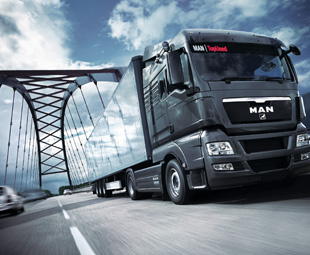Used vehicles gaining favour

The used-vehicle market is set to continue the positive sales performance it presented in 2016. Here is what some used-vehicle specialists have to say about it
It was an interesting year, 2016. Poor economic performance across the board meant that companies cut back on spending and fleet expansion, instead opting to replace vehicles only as needed. The market for new vehicles was thus down, but not below expectation.
What effect did this have on the used-vehicle market?
A good one … according to some key representatives of the local used-vehicle market, sales of used vehicles were up markedly across the board.
“Prices were under pressure in 2016, due to the economic climate, which caused a decline in used-vehicle prices. This benefited first-time buyers and increased sales of the lower-priced vehicles. The deterioration of the exchange rate also opened up export markets with increased sales,” says Gert Fourie, head of MAN TopUsed, MAN Truck & Bus SA.
Bruno Palma, general manager of TruckStore, the used trucks and services division of Mercedes-Benz South Africa, agrees. “Locally, the poor economic growth in South Africa; the weakening of the rand, which resulted in price increases in new vehicles well above inflation; as well as the increase in interest rates, all played a role in putting stress on consumer affordability, which favoured the used commercial-vehicle market.
“From an export point of view, the market for used commercial vehicles in the southern African region remained strong, with the weaker rand contributing towards the success in 2016.”
In short, suggests Fourie, customers are looking for more value for their money and used vehicles are being considered as an alternative to new vehicles. Despite an improvement in the forecasted economic growth, this trend is expected to continue throughout 2017.
According to Palma: “The current view is that uncertainty around economic and political issues will prevail. This could constrain growth, which could heighten consumers’ risk aversion and lower confidence levels.
“This will continue to have a negative impact on commercial vehicle sales in 2017. Sustaining activity levels in these conditions would, however, be positive,” he adds.
Fourie agrees that this is so considering that, in an increased number of cases, fleet sizes are actually shrinking. “In general, customers are not growing their fleets, but are replacing vehicles. In 2016, the increasing number of trade-ins caused an oversupply of used vehicles and added corresponding pressure on prices.”
That said, Palma notes that a downward trend in the trading in of used commercial vehicles has been evident. He agrees that numerous fleets have been downscaling.
It’s obvious, then, that the demand for used vehicles is not going to abate any time soon. “The demand for good-quality used vehicles will increase and customers will expect more for their money,” says Fourie, offering some tips to customers to ensure those are just the types of vehicles they choose.
“Customers should look more towards refurbished vehicles and used vehicles that still carry warranties from the manufacturers. Buying from a dealer that can provide the peace of mind of a vehicle warranty is advised,” he says.
“It is critical to one’s success as a used-vehicle dealer to have the correct vehicles in stock to satisfy the needs of all customers. We are a business partner that helps grow our customers’ businesses.
“Buying from a dealer that assures its customers transparency, and provides reliable confirmation of the age of the vehicle, as well as its condition, mileage and service components, means the customer can find the most appropriate transport solution,” concludes Palma.
Published by
Focus on Transport
focusmagsa




